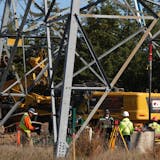Opinion editor's note: Editorials represent the opinions of the Star Tribune Editorial Board, which operates independently from the newsroom.
•••
Dr. Robert Bogan tried giving away his practice to entice a new veterinarian to the rural southern Minnesota county where he's lived and worked for decades.
But the generous offer wasn't enough to prevent Bogan's young, hand-picked successor from moving elsewhere after starting in 2022. So Bogan, now 76, shelved his retirement plans and is back to being the only veterinarian whose clinic is located in Faribault County. That means working Mondays through Fridays at the Makotah Veterinary Center in Blue Earth. And, taking the night and weekend emergency calls that come with providing care in a farming community.
Bogan pauses and offers a quiet response when asked "How long can you keep doing this?" His answer: "I don't know." Still, he's optimistic. "My dad made hay when he was 80," he told an editorial writer.
Blue Earth economic development officials are in overdrive trying to find another veterinarian, pointing out that this care is foundational for the success of farmers and the businesses that depend on them. Unfortunately, they face a grim reality — a nationwide shortage of veterinarians caring for large animals in rural areas.
Federal and state lawmakers must take heed because ongoing policy remedies and innovative incentives are urgently needed.
It isn't just agricultural communities' economic vitality at stake. Rural veterinarians typically do far more than take care of companion animals. Their responsibilities include cattle, poultry, hogs and other animals that provide the meat, eggs and dairy that fill grocery store shelves. Having enough veterinarians to care for these animals is critical to food security.


